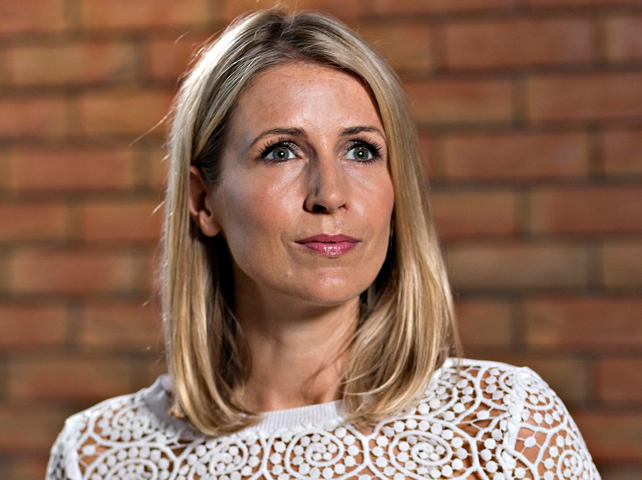

The disconnect between legacy systems and mobile needs to be addressed, says Sarah Edge, director of sales for the UK and Ireland at SOTI
With 71 per cent of global industry leaders believing that mobile-first technologies will be critical to the delivery process in the next five years, the focus for transportation and logistics (T&L) organisations needs to be on integration of new and existing systems to keep their expansion plans on track.
A recent global research report by SOTI, which interviewed 550 IT decision-makers in the T&L industry across eight countries (UK, U.S., Canada, Mexico, Germany, France, Sweden and Australia), found that almost three-quarters (74 per cent) have already invested in mobile technology wearables or IoT solutions to help speed up the delivery process.
And with a further 80 per cent set to invest in similar solutions over the course of 2021, the industry needs to be confident that merging old and new technology will have a demonstrable, positive impact on the supply chain for years to come.
From Manual to Mobile
Over the past 12 months alone, 75 per cent of T&L leaders confirm their organisation has invested considerably in new technology.
In an industry that relies on being able to provide services faster, more efficiently, and more cost-effectively than the competition, these enablers of quick communication and real-time visibility are game changing.
It comes as no surprise, therefore, that 50 per cent of global T&L leaders believe that mobile-first technologies will increase the speed of their delivery process.
Looking into those investments further, the role of IoT has the potential to automate and digitise the most manual and time-consuming tasks, while also enhancing the accuracy of information. Worryingly, 45 per cent of respondents revealed that they still update multiple systems manually, so this particular step-change has ramifications far beyond just the speed of delivery.
Elsewhere, almost one-quarter (24 per cent) believe that wearables will play a more important role in this strive towards improved worker productivity, customer satisfaction and real-time connectivity throughout the supply chain.
Blaming Legacy
The sector has identified the gaps that need to be filled, has seen where investments could be channelled to meet new levels of consumer demand and are in the process of realising that strategy.
The challenge arises at the implementation stage. The industry has legacy systems, which can also be framed under the banner of ‘culture.’ Decision makers are in a rush to change the status quo but are potentially forgetting about the transitional element of the overall transformation.
This has led to a situation, despite all this positive intention, where 57 per cent believe that legacy systems have prevented their organisation from sufficiently upscaling their operations during the COVID-19 pandemic.
Upon closer inspection, it isn’t necessarily those legacy systems that are causing the problem. A much higher percentage – 72 per cent, in fact – believe the actual issue is that their systems and new technologies are not integrated adequately.
There is a nuance between ‘replacement’ and ‘integration’ that is brought to the forefront here. It’s simply not practical, and certainly not feasible, to simply rip out every piece of legacy technology and start again.
Every organisation will have these legacy systems in place, and the instinct should not be to simply discard or disown them in favour of mobile momentum. The emphasis should be on effective integration of the old and the new.
The Integration Race
That aforementioned inability (among 72 per cent of respondents) to effectively integrate new systems is causing employees at 98 per cent of T&L companies to lose time within their normal working weeks as they deal with technical difficulties. Inevitably, this isn’t just a nuisance, but a hit to shipment delivery successes, and ultimately customer reputations.
And for those wanting proof that it’s not just the legacy systems bringing the new installations down, 70 per cent confirmed that reducing downtime of mobile devices in the field is their top concern. Without effective integration the new horizon remains in the distance.
Therefore, perhaps the race should instead be towards addressing this disconnect between legacy and mobile. For those who have engaged with this challenge, the results are quick and undeniable. Reduced support costs, communication costs, input requirements and scanning times were all reported by one example client, DPD Ireland, who adopted SOTI’s Delivery Connect solution. Similarly, American Airlines estimates it can solve between 90 to 95 per cent of its field device IT issues remotely thanks to effective integration of its mobile devices into the infrastructure, courtesy of SOTI MobiControl.
Integration is the final link in a chain of investments, that will reward the sector for its positive intention. Not all industries are putting such short-term pressures on themselves to realise digital and mobile benefits, and it would be a shame for the final implementation stage to derail such ambitions. By integrating new systems with their legacy infrastructure, T&L organisations can build their own legacies over the next exciting five years.

Sarah Edge is director of UK and Ireland sales at enterprise mobility solutions firm SOTI







